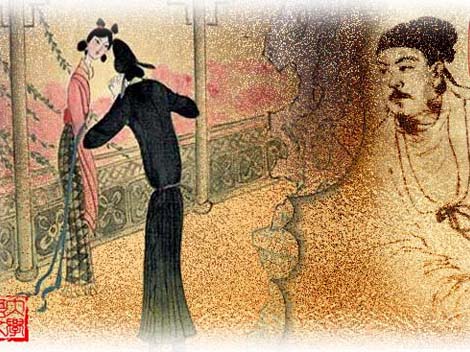
Literature of the Yuan dynasty has not a long history, but its development trend is worth special attention. In Yuan dynasty, narrative light literature witnessed considerable development. Zaju opera was the first new force suddenly rising, whose emergence marked the maturity of Chinese opera. Sanqu was a new poetic style popular in Yuan dynasty. Though Sanqu can be lyric and narrative, it is normally treated as a narrative style. Zaju and Sanqu are collectively called Yuan opera, the main body of literature in Yuan dynasty. However, Zaju opera far exceeds Sanqu in achievements and influences, so some refers to "Yuan opera" exclusively as Zaju. Yuan opera means opera of Yuan dynasty.
There are two direct origins of Zaju in Yuan dynasty: one is a storytelling and singing art form from the Song dynasty to the Jin dynasty-Zhu Gongdiao; the other is a playlet form that focuses on making fun-Zaju of Song dynasty and performers' scripts of the Jin dynasty. Zaju of the Yuan dynasty is evolved by inheriting characteristics of performers' scripts of Jin dynasty, combining many features of Zhu Gong Diao and absorbing elements from other folk crafts. After its formation, Zaju quickly became popular in northern China. Representative writers of Zaju like Guan Hanqing, Wang Shifu, Ma Zhiyuan, Bai Pu and Ji Junxiang, and most famous works like Injustice of Dou E, Romance of Western Chamber, Fall in the Palace of the Han, Parasol Rain, Over the Wall, On the Horse and Orphan of the Zhao Family appeared in this period.
The play script for Zaju of the Yuan dynasty comprises four acts and a xiezi. At the very beginning, "zhe" (act) referred to the section from the point any character went on the stage to the point he/she went off the stage. It was not until the Ming dynasty that the phases of Yuan Zaju were clearly defined, and a suite of music of the same gong diao was taken as one zhe, so "zhe" is also a musical unit. One script four zhes means that in a play, four suites of music with actions and spoken parts in between constitute four phases in the development of the plot, namely setup, development, climax and resolution. There are a few Zaju works that break the rules of one script four zhes because of the intricate plot, such as the Romance of Western Chamber. Some Zaju works also include a xiezi, which originally means a piece of wood inserted into the tenon of a wood ware to make it tight. In Yuan Zaju, xiezi is placed before the first zhe as the prelude, or between zhes as an interlude.
We Recommend
